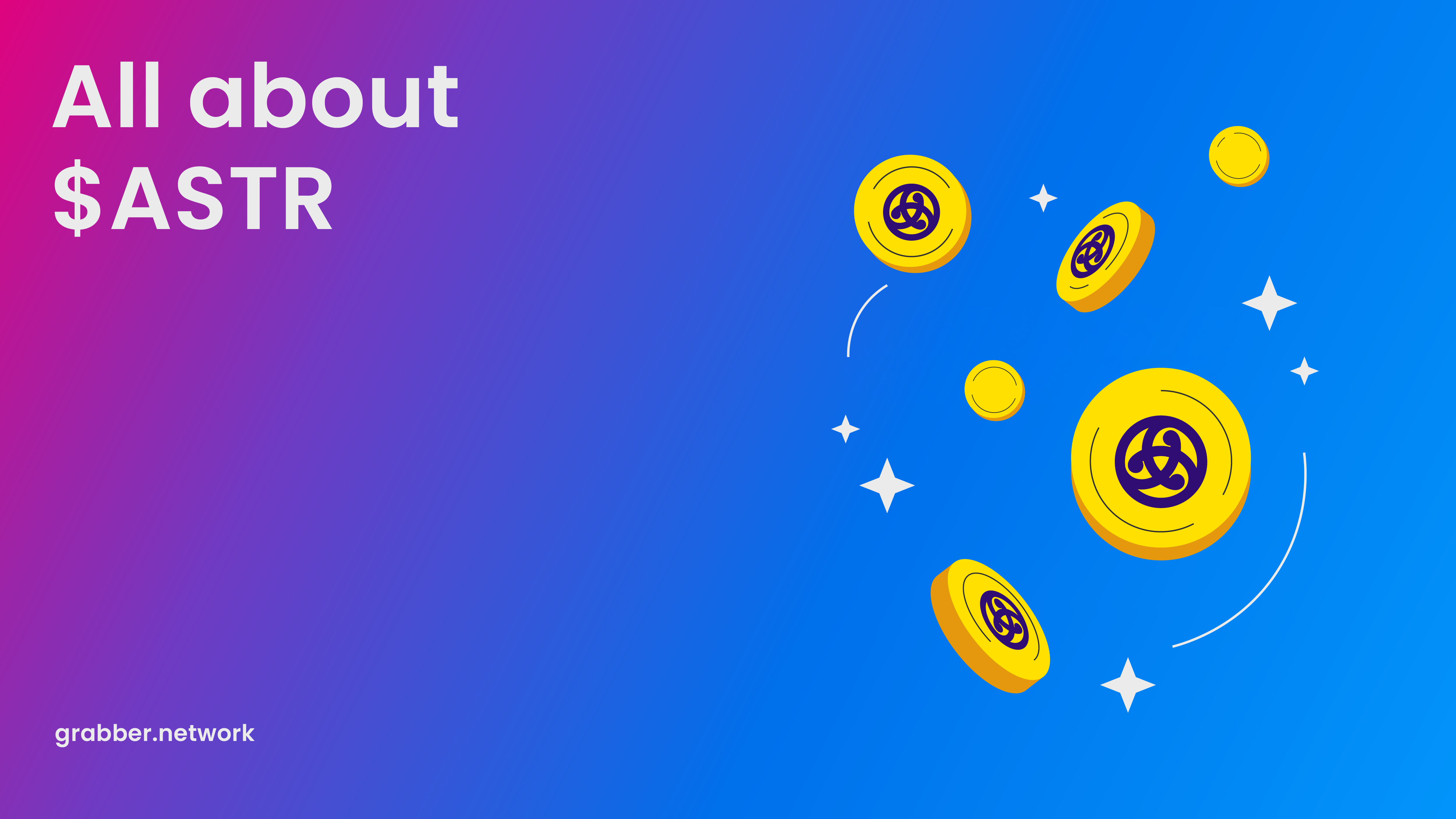$ASTR token review

Astar Token $ASTR is the utility token which fuels the Astar Network – a multi-chain dApp developing hub that supports Ethereum and WASM, and concurrently one of the biggest parachains on Polkadot.
Key points:
- Astar network is a PoS smart contract hub in Polkadot, which proposes solutions to scalability and interoperability problems in crypto.
- Primary features of Astar include Compatibility with EVM and WASM, dApp stacking, Multi-chain cross-chain deployment for smart contracts
- Main features of $ASTR include: Transactions, dApp Staking and On-chain Governance
- About Astar network?
If you haven’t read our deep-dive on Astar network, please don’t hesitate to do so! If you don’t have time, there’s a quick overview of the Astar network in key points:
Astar is a scalable smart contract platform and a leading parachain on Polkadot. It supports development of dApps using two programming languages – WASM and EVM.
Astar also aims at solving the interoperability problem in crypto with its breakthrough 2-layers design. Astar has a two-layer structure. The first layer connects Astar to the Relay Chain of Polkadot. The second layer is responsible for running smart-contracts.
The eternal problems of interoperability and scalability in blockchain is what Astar aims to solve. Devs can build whatever kinds of apps they wish on Astar Network without having to worry about whether the available scalability will be adequate for its uninterrupted use. Astar also allows moving value from one L1 blockchain to another using bridges, for example, to exchange ETH to BTC. And these types of transactions are possible using Astar without the need for centralized exchanges.
Astar allows for layer2 dApps to arrive to chains where they did not have a presence before. Best of all, they arrive at a very simple solution, instead of having to go through major changes in their own structure or something of the sort.
There is a vibrant community and a palpable value locked in the Astar network, both of which are growing even further.
As most likely know, the Polkadot Relay Chain was not designed to ever support smart contracts, which is why Aster’s introduction of them through an alternate method for the smart contracts to arrive there.
In the end, Aster Network is an open-source project that offers plenty of new opportunities, which is why it is definitely worth your attention.
And now for the Astar’s basic token.
- $ASTR Token
2.1 Basic Allocation info:
Total token supply: 7,000,000,000
Token ticker: $ASTR
Inflation: 10% (yearly)
| Title | % |
| Users and Early Supporters | 30 |
| Parachain Auction in 2021 | 20 |
| Protocol Development | 5 |
| On-Chain DAO | 10 |
| Marketing | 5 |
| Early Financial Backers | 10 |
| Team (Employee Incentives) | 5 |
| Foundation | 10 |
2.2 $ASTR Primary functions
The primary, integral functions of $ASTR in the Astar network are:
- Transactions
- DApp Staking
- On-chain Governance
Transactions
The transaction part is pretty easy and straight-forward.
Every on-chain transaction requires the sender to pay fees. Part of the fee is burned and part is deposited to the collator.
Collators are actors in Polkadot, who maintain the Parachains. Collators are nodes of the Parachain, which ensure performance of everything on the Parachain, except for the block validation. Collators produce new block candidates to pass to the validators of Relay Chain of Polkadot for verification and inclusion in the shared state of Polkadot.
DApp Staking
DApps Staking is the Astar-exclusive mechanism that Astar Network core team invented. It’s a core of a Build2Earn model of Astar which empowers developers to get paid for the code they write and dApps they build.
Other blockchains such as Bitcoin and Ethereum only reward transaction fees to the miners, and developers, who truly contribute to the ecosystem, have to pay the price for deploying applications in the form of Gas.
Astar have divided the block reward into two parts: 50% of the block rewards on the Astar root chain are distributed to DApps developers who increase the value of the network and the remaining 50% of the rewards are distributed to the block’s validators.
Astar also allows the assignment of a smart contract administrator, called an operator. Operators are chosen by other dApps nominators.
DApp Staking is a simple but strong mechanism. $ASTR token holders can stake $ASTR tokens on dApps they like and want to support. By doing so, the staker earns $ASTR tokens from block rewards. In addition to that, dApps developers get rewards based on the amount staked on them. Sort of a grant mechanism, if you will.
On-chain Governance
$ASTR is also used for network governance, which implies a right to vote on important developments and decision-making that comes with the evolution of the project. As a 100% decentralized network, Astar requires its community of token holders to vote or propose changes.